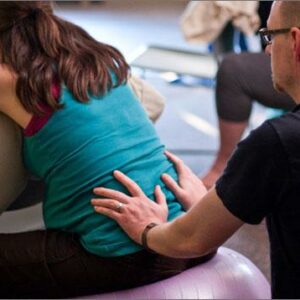Questions and fears about labour pain are what I hear most often from doula clients, coaching clients and couples in my childbirth classes.
I am not going to lie. Labour can be painful.
How painful?
Well, that depends.
There is a wide variety of pain perceptions and stories about pain levels in labour. Your baby’s position, the shape of your uterus and pelvis, and how relaxed and positive you feel all play a factor in how painful this can be.
I like to talk to my clients and students about the concept of intensity. I prefer to think of labour as intense, not just painful. Painful is a small word – it is addressing only the physical aspect of childbirth. Intensity addresses not just the physical, but also the mental, emotional, and spiritual components of this experience.
Imagine the most intense part of labor–perhaps just before pushing—and rate that pain, that intensity, with a number from 0 to 100, with 0 being no pain at all (like just walking down the street) to 100 being the most intense pain you can imagine without fainting.
What do you imagine yourself doing to help yourself at this level of intensity? What do you imagine your partner, or anyone else at your birth, doing to help you?
As part of the intensity of labour, there will be times when you will have to dig deep to get through this experience. Our culture does not focus on this part of the birth experience though. Instead, we view labour pain and birth as an emergency (and to help increase ratings for medical TV shows!). Because of this focus, our perception of labour pain can be skewed even before the first contraction occurs.
How is labour pain different from the pain of breaking a limb? When you break a limb it’s out of the blue, it isn’t something you have planned for like labour. The pain is consistent when you break a bone. With labour, there is a rest period between contractions. This rest period allows you to catch your breath, change position, get grounded, have a sip of water, and gear up for the next contraction.
However, if you are fearful of labour, this heightens your pain perception and it can be hard to take full advantage of the rest periods as you may still feel like you are in pain. The more you tell yourself that this is hard and it sucks, the harder it will only be.
Therefore, it is important to enter labour as relaxed, positive and prepared thus eliminating or reducing fear and tension. By exploring your birth fears and pain perception before going into labour you will be able to be more positive for your experience.
Here are several things you can do to reduce your labour pain:

– Take a childbirth class or work with a coach to become as educated as possible: The more you know about labour (and not just the horror stories you’ve been told), the easier it is to handle the reality of what this looks like. Reading books on labour, spending time on education websites (and avoid Facebook forums) will all help.
– Face your fears: I have written a blog on just this topic. You can read it HERE
– Have a mindfulness practice: Learning about positions and comfort measures that you can do to help during labour can definitely make a difference for your experience. However, our minds are good at questioning and distrusting what is happening to us, especially when we are doing something new, like birth. By creating a mindfulness practice NOW you will be able to control your thoughts much easier during labour. I cannot recommend this highly enough. It has made all the difference in my client’s births and in my own experience.
 – Build a support team for your birth. Whether this is taking specific pain management classes with your husband and practicing what you learn, hiring a doula, or working with a trusted friend who has attended births before building a team that you can rely on will make all the difference. Being able to look someone in the eyes during a difficult contraction and they tell you that you can do this and they believe in your strength will give you the fuel to keep going.
– Build a support team for your birth. Whether this is taking specific pain management classes with your husband and practicing what you learn, hiring a doula, or working with a trusted friend who has attended births before building a team that you can rely on will make all the difference. Being able to look someone in the eyes during a difficult contraction and they tell you that you can do this and they believe in your strength will give you the fuel to keep going.
– Move during your labour: Once labour becomes intense then keep moving – walk, dancing, go up and down stairs. As your labour progresses change positions often, a few times every hour. The more you listen to your body and move your hips and pelvis the easier it is for your baby to descend and be born. Do what you can to avoid lying on your back, unless your caregiver recommends it. Even though this is the position we see most often in the media it actually creates more work on your body and baby, and therefore more pain.
– Stay hydrated: When you are dehydrated your uterus doesn’t contract as efficiently. By making sure that you are having frequent sips of water your energy will be able to keep up with the rigours of your labour.
– Make sure you are using the bathroom: If your bladder is empty there is more room for the baby to come down. And less pressure on your bladder, therefore a reduction in pain. Make sure you are going pee at least every two hours.
By following all of these suggestions and many of our other blog posts about handling labour, you will be able to get through this experience as easily as possible.
Working through your perception of pain with a BIRTH PREPARATION COACH can make all the difference in your experience. It can also help you not feel alone, especially if this process feels overwhelming.
Book a free discovery call to see how working with a coach is the right step in your birth and postpartum preparation! Book the call HERE
